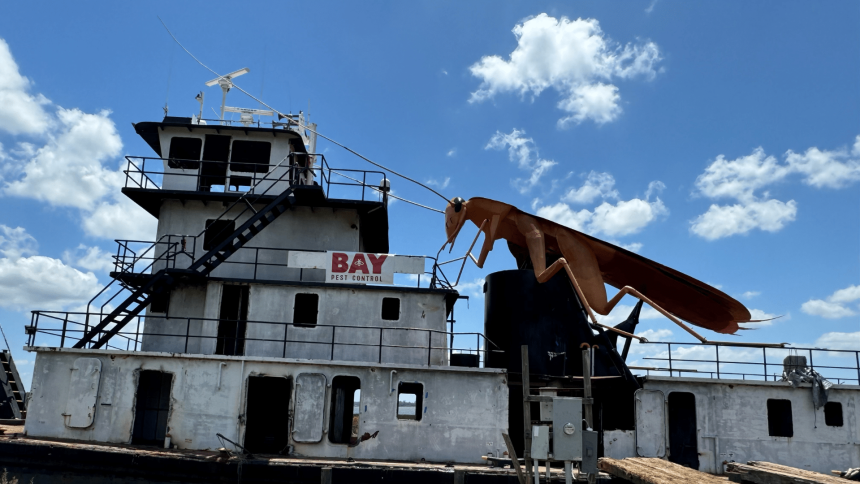A massive, 70-foot-long steel cockroach is set to be sunk into the Gulf of Mexico and turned into an artificial reef.
Bruno Milanese, the owner of Bay Pest Control on the Mississippi Gulf Coast, was one of the catalysts behind the project. Milanese was approached by Mississippi Fishing Banks to partner with them on a new artificial reef, and he wanted whatever was sunk to stick in more ways than one.
“If I was gonna do something, we wanted it to be a little more fun,” Milanese told SuperTalk Mississippi News. “That’s where the idea of putting a giant cockroach on the back of the boat came in – just to make it more fun. Something a little more exciting to look at.”
Bay Pest Control partnered with Mississippi Fishing Banks and the Mississippi Department of Marine Resources to bring the colossus cockroach to life. Milanese said that the project took about six months to complete from start to finish. Though it won’t be visible to many aside from marine wildlife and curious divers, those tasked with building the unique reef wanted it to be a sight to see.
Milanese said the ocean-bound bug is an American cockroach, one of the most common insects in the southern U.S. The welder in charge of building the insect took 3D imaging of a real dead American cockroach and went through three different iterations before landing on the finished structure that Milanese called “very close to anatomically accurate.”
The steel cockroach will be welded to a 150-foot tug boat, floated off Mississippi’s coast into the Gulf of Mexico, and sunk 100 feet underwater.
Per the National Wildlife Federation, the Gulf of Mexico accounts for approximately 67% of the nation’s total oyster harvest. But the northern Gulf of Mexico is believed to have lost well over half of its historic oysters, primarily a result of overharvesting from destructive dredging practices that also degraded marine habitats.
The Mississippi Artificial Reef Plan was set into motion in 1999, and the nearshore initiative has been particularly beneficial in revitalizing sports fishing and other ocean life after ecosystem damage from Hurricane Katrina.
For Milanese, any chance he gets to make a real impact on the environment that he has benefited from is one he will take.
“I grew up on the Gulf of Mexico my whole life,” Milanese said. “I fish a lot and do a lot of things here. Anything that we can do to help keep fishing as close in-shore as we can is a benefit for everybody. It’s a food source, it’s a sport, it attracts people to the Gulf Coast. Any time that you can do something to help the environment and the people around you, then that’s a positive thing. If you can do something like that, do it.”
The cockroach will be displayed at the Seafood Museum in Biloxi before it finds its home as an artificial reef on the ocean floor at the end of July.








